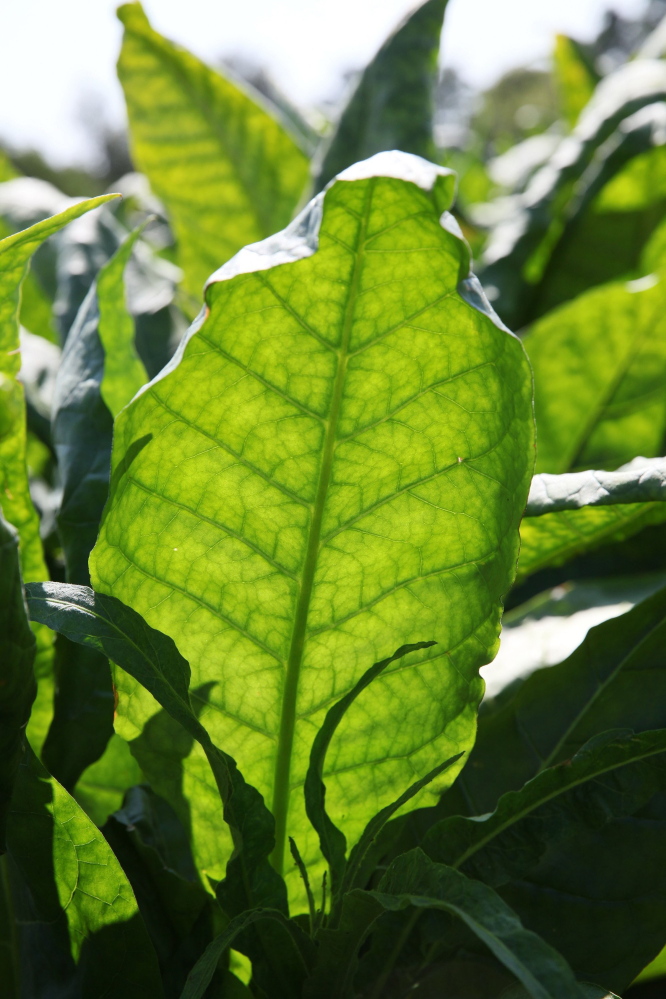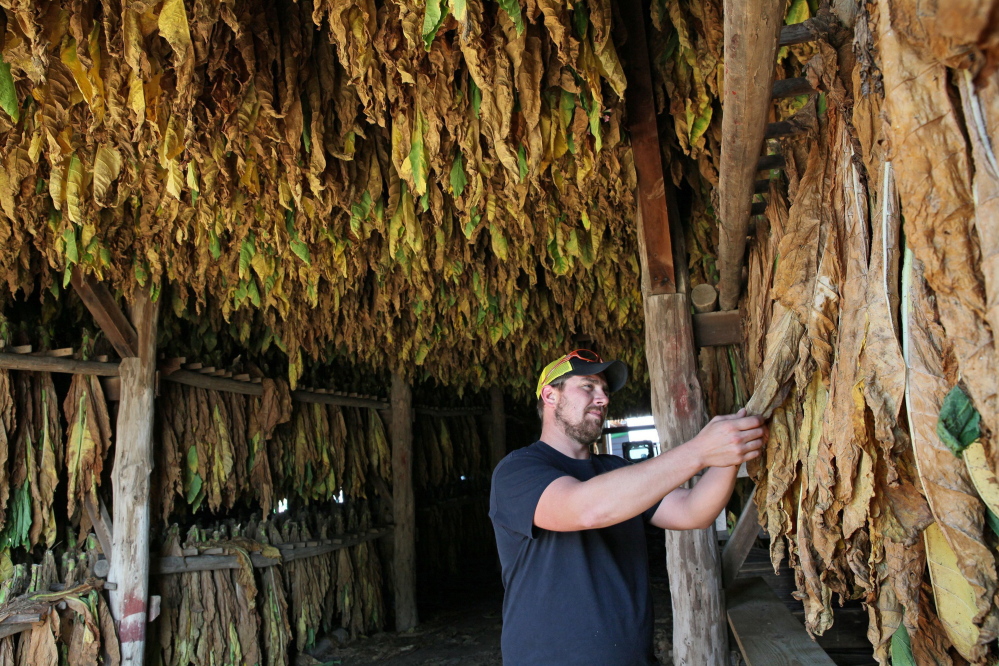Some of Jay Smithback’s earliest memories are of driving a tractor, when he was 4 years old, and working in his family’s tobacco field.
Now 29, Smithback is a fourth-generation tobacco farmer near Deerfield, in Dane County, Wisconsin. Overall production of the crop in Wisconsin has dwindled to the point where it’s barely a blip in the state’s $59 billion agricultural industry, but it remains profitable for Smithback and about 200 other farmers.
Beginning next month, however, the nation’s 10,000 tobacco farmers will be totally exposed to the laws of supply and demand when the final payments from a $10 billion federal program arrive. The aim of the decadelong program was to ease tobacco growers and landowners off a price-support and quota system that had guaranteed minimum prices for most of the 20th century.
Some farmers have received thousands of dollars per year from the program approved by Congress in 2004. The government arranged with tobacco companies to make the payments to growers and landowners who held tobacco allotments in 2002.
In Wisconsin this year, about 4,400 farmers and landowners will receive approximately $4.5 million from the program. There was probably more than one person sharing the payment on many farms, thus explaining the 4,400 recipients, according to the U.S. Department of Agriculture.
“Any time a payment ends, it’s always missed,” said Tim Rehbein, a former University of Wisconsin Extension agent in Vernon County, where tobacco was once a major crop.
Fewer farmers are growing tobacco, which is labor-intensive to plant, manage and harvest, and often involves several generations of family members working together in the fields.
Seventy years ago, tobacco was grown on nearly 30,000 acres in Wisconsin.
Today, it’s down to less than 900 acres.
Tobacco helped many small farms endure tough times when prices of dairy products and livestock plummeted, or drought wiped out much of the corn and soybeans. It single-handedly kept a lot of farmers in southern Wisconsin in business in the late 1980s, according to Smithback, whose farm also raises corn, soybeans and wheat.
“I love tobacco. I absolutely do,” Smithback said about growing the crop.
Even with a dramatic decline in smoking and other tobacco use, and the demise of the quota system and government payments, U.S. farmers who continue to grow the leaf are thriving. Some Wisconsin farmers are producing more tobacco now than they did a few years ago.
A few have switched from producing “chew” tobacco, the mainstay of the industry here for years, to tobacco used for premium cigarettes. China is the biggest single customer for U.S. tobacco.
“Just when you think the industry is gone, something about it changes. For now, on a limited scale, it continues,” said Casey Langan, executive director of public relations for the Wisconsin Farm Bureau Federation.
“When the government got out of the quota system, I think a lot of growers thought there wouldn’t be tobacco in Wisconsin in a few years. But what happened was the tobacco companies started doing direct contracts with the growers,” Langan said.
After expenses, a farmer can net more than $1,000 per acre from tobacco. But even the most successful growers acknowledge that their family tradition may end with their generation, partly because it’s harder to find the manual labor needed for the planting and harvest.
The tools used haven’t changed much in the last 100 years.
“It’s backbreaking work. It’s the closest thing we have to picking cotton,” said Langan, who grew up on a farm that raised tobacco. “My grandpa had 14 acres, and I always swore it was 13 too many,” he said.
Send questions/comments to the editors.




Success. Please wait for the page to reload. If the page does not reload within 5 seconds, please refresh the page.
Enter your email and password to access comments.
Hi, to comment on stories you must . This profile is in addition to your subscription and website login.
Already have a commenting profile? .
Invalid username/password.
Please check your email to confirm and complete your registration.
Only subscribers are eligible to post comments. Please subscribe or login first for digital access. Here’s why.
Use the form below to reset your password. When you've submitted your account email, we will send an email with a reset code.